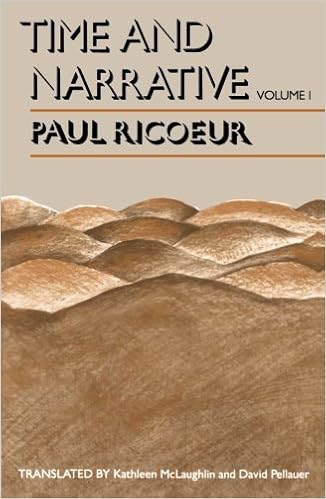
Though the development of expertise always pushes lifestyles towards digital life, the decade has witnessed a renewed specialise in materiality. Design, Mediation, and the Posthuman bears witness to the eye paid by literary theorists, electronic humanists, rhetoricians, philosophers, and architects to the crafted setting, the style during which artifacts mediate human kin, and the structure of a global during which the boundary among people and issues has likely imploded. The chapters ponder questions about the level to which we should view people and nonhuman artifacts as having equivalent potential for enterprise and existence, and the ways that technological mediation demanding situations the vital tenets of humanism and anthropocentrism.
Contemporary theories of human-object family members presage the arriving of the posthuman, that is now not a futuristic or science-fictional proposal yet particularly one descriptive of the current, and certainly, the previous. Discussions of the posthuman have already got a protracted background in fields like literary thought, rhetoric, and philosophy, and as advances in layout and know-how lead to more and more attractive artifacts that mediate increasingly more facets of way of life, it turns into essential to interact in a scientific, interdisciplinary, serious exam of the intersection of the domain names of layout, technological mediation, and the posthuman. hence, this assortment brings different disciplines jointly to foster a discussion on major technological matters pertinent to philosophy, rhetoric, aesthetics, and science.
Read or Download Design, Mediation, and the Posthuman (Postphenomenology and the Philosophy of Technology) PDF
Best Phenomenology books
Time and Narrative, Volume 1 (Time & Narrative)
Time and Narrative builds on Paul Ricoeur's past research, within the Rule of Metaphor, of semantic innovation on the point of the sentence. Ricoeur the following examines the production of which means on the textual point, with narrative instead of metaphor because the ruling main issue. Ricoeur unearths a "healthy circle" among time and narrative: time is humanized to the level that it portrays temporal adventure.
Phenomenology, including Marxism, pragmatism, and analytic philosophy, ruled philosophy within the 20th century—and Edmund Husserl is generally concept to were the 1st to improve the concept that. His perspectives inspired quite a few very important later thinkers, comparable to Heidegger and Merleau-Ponty, who ultimately became phenomenology clear of questions of information.
The philosophical paintings of Jean-Luc Marion has opened new methods of conversing approximately spiritual convictions and reviews. during this exploration of Marion’s philosophy and theology, Christina M. Gschwandtner provides a accomplished and significant research of the guidelines of saturated phenomena and the phenomenology of givenness.
Additional resources for Design, Mediation, and the Posthuman (Postphenomenology and the Philosophy of Technology)
CR: the recent Centennial evaluate five. 2: 107–149. Lambert, Gregg. 2004. The go back of the Baroque in smooth tradition. London: Continuum. Manovich, Lev. 2008. “Art After net 2. zero. ” The artwork of Participation. 66-79. ny: Thames and Hudson. nationwide Geographic 14 Apr. 2012. “Episode 2: You Won’t think Your Eyes. ” try out Your mind. tv. Ndalianis, Angela. 2004. Neo-Baroque Aesthetics and modern leisure. Cambridge: The MIT Press. Pold, Søren. 2005. “Interface Realisms: The Interface as Aesthetic shape. ” Postmodern tradition 15. 2. Purgar, Kresimir. 2006. The Neo-Baroque topic. Zagreb, Croatia: Meandarmedia. Sheridan, David M. , Jim Ridolfo, and Anthony J. Michel. 2012. The to be had technique of Persuasion: Mapping a conception and Pedagogy of Multimodal Public Rhetoric. Anderson: Parlor Press. Steinberg, Leo. 2002. “Reflections at the kingdom of feedback. ” In Robert Rauschenberg, edited by way of Branden W. Joseph. 7–37. Cambridge: MIT Press. Van den Boomen, Marianne. 2008. “Interfacing via Iconic Metaphors. ” Configurations sixteen: 3355. Vicas, Astrid. 1998. “Reusing tradition: The Import of Détournement. ” Yale magazine of feedback eleven. 2: 381–406. Wakin, Daniel. “Dispossessed. ” ny occasions, January 15, 2012. www. nytimes. com. bankruptcy 4 Techno-Geographic Interfaces Layers of textual content and corporation in cellular Augmented fact John Tinnell For media theorists and technologists, “ubiquitous computing” (ubicomp) marks the paradigmatic horizon of present options in cellular media, locative networks, wearable units, and shrewdpermanent items. Ubicomp systems promise to damage from the non-public computing (PC) period and the types of computing that outlined it, growing as many new chances and new difficulties because the shift from mainframe pcs to desktops initiated throughout the Nineteen Eighties. Pioneering ubicomp within the past due Nineteen Eighties, Mark Weiser and his collogues at Xerox PARC prototyped completely new different types of cellular, wearable, and embedded units designed to deliver the virtuality of computation “into the actual international” (Weiser 1991, 98). The smartphones and drugs that dominate today’s mediascape are all conceptually absolute to the “tabs, pads, and forums” defined in Weiser’s recognized essay “The desktop for the Twentyfirst Century. ” In that paper, Weiser defines ubicomp against the digital fact of the computing device display, in particular the calls for the latter makes of individuals: to prevent no matter what actions they could rather be engaged in, in an effort to interact—stationary and isolated—with clunky and conspicuous desktops through really expert instructions and technical jargon. Echoing this point of Weiser’s sentiment, many modern researchers and architects of cellular and wearable units typically valorize “humancentricity” as a most sensible precedence that, they suspect, may still advisor destiny advancements in computing. layout researcher Isabel Pedersen defines human-centricity as “a worth process that privileges people over machines and different hegemonic orders in an effort to keep away from dehumanizing results” (Pedersen 2008, sixty nine 70 John Tinnell 168). For Steve Mann, a number one inventor of wearable units, the computing device laptop is machine-centric and anti-human since it calls for people to have interaction with it at the foundation of its personal limits—desktops needs to stay desk bound and so we needs to stay desk bound if we wish to use them (168).



